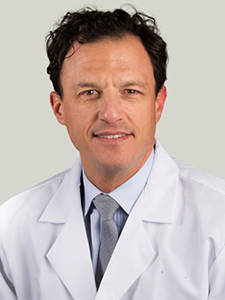Article
Dr. Eggener on why active surveillance should be “preferred” for low-risk prostate cancer
Author(s):
Key Takeaways
- Active surveillance for low-risk prostate cancer is supported by robust data and international guidelines, showing excellent long-term outcomes.
- Despite the benefits of surveillance, some patients choose treatment due to fear, necessitating informed discussions about risks and benefits.
Eggener addresses the NCCN’s reversal on its controversial decision to remove the word “preferred” from its guideline on active surveillance for low-risk prostate cancer.
Scott E. Eggener, MD

The National Comprehensive Cancer Network (NCCN)’s recent decision to remove the word “preferred” from its prostate cancer guidelines in reference to active surveillance as an approach for low-risk disease—and subsequent revision “preferred for most patients”—caused a stir within the urology world. The preferred approach for low-risk prostate cancer was the subject of a debate held at 2021 Society of Urologic Oncology Annual Meeting. In this interview, Scott E. Eggener, MD, a participant in the debate, explains the rationale for active surveillance in low-risk prostate cancer and offers advice for patients recommended surveillance but who want to undergo treatment. Eggener is the Bruce and Beth White Family Professor of Surgery and Radiology, vice chair of urology, and director of the High Risk and Advanced Prostate Cancer Clinic at the University of Chicago.
You are participating in a debate at the SUO annual meeting regarding the preferred approach for low-risk prostate cancer. Could you summarize the sides of this debate?
For men who are diagnosed with prostate cancer, roughly half are diagnosed with early-stage and what we term low-risk prostate cancer. The debate is over the NCCN guidelines on what the recommendations are for those men and what the options are. Historically, active surveillance was "preferred." Recently, that word was taken out [of the guidelines] and as of about 24 hours ago, the panel inserted it back in, but it's an important topic to debate. What are the things that go into the decision of surveillance vs treatment?
What points are you making in this debate?
First, and most important, there are a lot of data available from many different series showing superb long-term outcomes with active surveillance for men with low-risk prostate cancer, so it's a data-based recommendation that it should be the preferred option. Additionally, all the other international guidelines—our contemporaries from Europe, Australia, Canada—all also recommend surveillance as the preferred or primary consideration for management. However —and I think there'll be some agreement amongst the debaters—there are certain men with low-risk prostate cancer that do have features where treatment should be discussed as an option, side by side with surveillance.
How has your approach to low-risk prostate cancer evolved since you began your clinical practice?
I started practicing about 14-15 years ago, and I was one of the first urologists in the Chicagoland area to routinely offer surveillance. There was a lot of blowback from my colleagues and even some patients. But thankfully, there's been an evolution in the maturation of the data that are available, where they continue to show excellent long-term outcomes. Now, almost all men that I see with low-risk prostate cancer do surveillance. There are rare exceptions. But it's changed quite dramatically over the last 15 years both in my practice/our region and certainly across the United States. But we do have a long way to go across the United States to more appropriately have men do surveillance because there are still way too men in my opinion who get treated unnecessarily for early-stage prostate cancer.
What new and forthcoming advances in prostate cancer diagnosis and treatment, if any, do you think may alter your approach to low-risk disease?
In many men with low-risk disease, I don't know whether it's a service or disservice that they've been diagnosed with it. When we screen men, we're primarily looking for higher grade disease—Grade Group 2 or Gleason 7 or higher. Once a man is diagnosed with low-risk prostate cancer, we have a lot of tools available with MRI, genomic biomarkers, biopsy, PSA, and we need to do a better job of figuring out how to integrate those and minimize the number of biopsies a man has to have, but still maintain the excellent long-term outcomes.
What advice would you have for a patient who is recommended for active surveillance but wants to undergo treatment anyway out of fear of the cancer getting worse?
There certainly are men that hear the word "cancer," and their gut instinct, very appropriately, is to do treatment. My advice would be to make sure that they meet with someone who spends a considerable amount of time with them and thoughtfully reviews the rationale of surveillance —most importantly, the excellent outcomes—and they also have an honest overview of what treatment might entail because there are some risks associated with it that can be life altering.
What are the issues with "overtreatment" in lieu of surveillance?
Overtreatment has been a decades-long problem, and we've made headway in the United States to minimize it, but we still have a long way to go. If treatment had no side effects, or an extremely low likelihood of side effects, there would really be no controversy whatsoever. But even in expert hands, if a man undergoes surgery or radiation, there's unfortunately a risk to their quality of life. There is some potential baggage that can come with it. The great news is most guys do really well. But they need to understand what they're getting involved with.
Newsletter
Stay current with the latest urology news and practice-changing insights — sign up now for the essential updates every urologist needs.

















